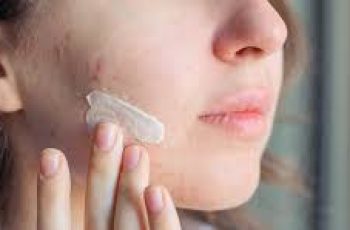
Can You Mix Niacinamide and Retinol?
Niacinamide and retinol are two skincare ingredients that pack a punch. They are both highly effective at improving skin texture, tone, and overall health.
Despite their individual power, you might be wondering: can you mix niacinamide and retinol? The answer is yes—these two ingredients can work well together and form a potent skincare duo when used correctly.
However, the way you layer them is important. There are specific techniques for applying these ingredients to maximize their benefits and minimize potential irritation.
While both niacinamide and retinol can be highly effective on their own, when used in combination, they can give you even better results.
Let’s dive into what each ingredient does, how to use them together, and what to avoid.
What’s Niacinamide?
Niacinamide, also known as Vitamin B3, is a water-soluble vitamin that is naturally produced by the body but can also be applied topically to deliver a wide array of skin benefits.
It has become a must-have ingredient in many skincare products, thanks to its versatility and ability to address multiple skin concerns.
Here’s what niacinamide can do for your skin:
Combats signs of aging: Niacinamide helps reduce fine lines and wrinkles, contributing to a smoother, firmer skin appearance.
Reduces acne and breakouts: It has anti-inflammatory properties, making it effective at calming acne-prone skin and reducing the appearance of blemishes.
Calms skin conditions: Niacinamide is beneficial for sensitive skin types, as it soothes conditions like rosacea and atopic dermatitis.
Repairs sun damage: It works to repair skin that has been damaged by the sun, helping reduce hyperpigmentation and discoloration.
Improves skin texture: Niacinamide promotes a plumped, even skin texture, giving you a healthy, glowing complexion.
With its many benefits, niacinamide is one of the most well-tolerated ingredients in skincare. It works well with almost any other active ingredient, including retinol, when applied correctly.
What’s Retinol?
Retinol is one of the most celebrated ingredients in skincare, known for its ability to promote youthful, clear skin. It’s a form of Vitamin A, and its benefits are well-documented in scientific studies.
As one of the most powerful anti-aging ingredients available, retinol has the ability to significantly improve skin texture, fine lines, and more.
Here’s how retinol can benefit your skin:
Speeds up the skin’s cell cycle: Retinol increases the turnover of skin cells, helping to reveal fresher, smoother skin.
Reduces signs of aging: It minimizes fine lines, wrinkles, and other signs of premature aging by stimulating collagen production.
Addresses uneven skin tone: Retinol is great for reducing pigmentation issues, including sun spots, dark spots, and acne scars.
Regulates sebum production: For people with oily or acne-prone skin, retinol can help balance the skin’s oil production, reducing breakouts.
Retinol can be a game-changer in the fight against signs of aging and skin texture issues.
However, it can be potent and may cause dryness or irritation if not used properly, which is why it’s important to introduce it into your routine gradually.
How Long After Using Niacinamide Can I Apply Retinol?
One of the common questions people ask when using niacinamide and retinol together is: how long should I wait between applications?
The good news is that niacinamide and retinol work well together, and you don’t need to wait long to apply them one after the other.
In fact, you can apply both ingredients within a 5-minute window, allowing your skin to absorb them properly without any irritation or redness.
This minimal wait time allows your skin to fully absorb niacinamide’s soothing properties before you apply retinol to target skin texture and fine lines.
However, some people prefer to give their skin a bit more time—if you’re in a hurry, a quick 5-minute gap is enough, but you can always allow a 10-15 minute wait if you prefer.
If you’re looking for a more time-efficient solution, there are also skincare products available that combine niacinamide and retinol, which can save you from having to layer multiple products in your routine.
What Can You Not Mix with Niacinamide?
Niacinamide is one of the most compatible ingredients with other skincare actives. It works well with a wide range of ingredients, making it a staple in many people’s routines.
Its humectant properties allow it to draw moisture into the skin, making it a great match for hydrating and soothing ingredients.
However, there’s one common myth about niacinamide that has been circulating for decades: it was once believed that niacinamide shouldn’t be used with Vitamin C (ascorbic acid).
This myth stems from outdated research from the 1960s, which suggested that combining these two ingredients would result in them canceling each other out.
Today, modern formulations and updated research confirm that niacinamide and Vitamin C can actually work well together.
Both ingredients target similar skin concerns, such as hyperpigmentation and signs of aging, without causing any adverse reactions when layered properly.
What Should You Not Mix with Retinol?
Retinol is a powerful ingredient, but it can be intense and cause irritation if used in combination with certain other actives.
If you’re using retinol, it’s important to avoid mixing it with the following ingredients in the same routine:
Vitamin C: Vitamin C is highly acidic, and applying it with retinol can irritate the skin.
Ideally, use Vitamin C in the morning to provide antioxidant protection and retinol in the evening to promote cell turnover and repair.
Benzoyl Peroxide: Both benzoyl peroxide and retinol can be harsh when used together, as they can cancel each other out.
It’s best to alternate between these two ingredients throughout the week to avoid overloading your skin.
AHAs & BHAs: Alpha Hydroxy Acids (AHAs) and Beta Hydroxy Acids (BHAs) are chemical exfoliants that can increase skin sensitivity when used with retinol.
To avoid irritation, use these exfoliants on different nights or reduce their frequency of use when incorporating retinol.
While these ingredients are not recommended for simultaneous use, they can still be part of your overall skincare routine if you apply them at different times of the day or on alternate days.
Should I Use Niacinamide Before or After Retinol?
When it comes to layering niacinamide and retinol, the general rule is to apply niacinamide first, followed by retinol. This order helps protect the skin’s natural barrier and minimizes irritation.
Niacinamide works to soothe and strengthen the skin’s barrier, which can be beneficial when using retinol.
Retinol can sometimes cause dryness or irritation, especially in the early stages of use, so applying niacinamide first can help mitigate these effects.
Additionally, niacinamide can help regulate skin hydration, keeping your skin calm and balanced.
How Long Does It Take for Niacinamide to Work?
If you’re wondering how long it takes to see results from niacinamide, you can expect to notice an immediate improvement in your skin’s hydration and texture.
Your skin will look plumper, more radiant, and balanced right after application.
For more long-term results, consistency is key.
After 8-12 weeks of regular use (preferably with a 5% niacinamide formula), you’ll notice a marked improvement in the appearance of fine lines, skin elasticity, and overall skin health.
Niacinamide helps repair skin damage and reduces the appearance of hyperpigmentation, so you can expect smoother, more even-toned skin over time.
Can I Use Niacinamide Every Day?
Yes, you can absolutely use niacinamide every day! It’s gentle enough to be used in both your morning and evening skincare routines.
Applying it twice a day helps maintain optimal hydration levels, repair skin damage, and protect the skin’s barrier.
Because niacinamide is a humectant, it draws moisture into the skin, helping to keep it hydrated and protected against environmental stressors.
Whether you’re using niacinamide in a serum, moisturizer, or toner, you can apply it daily to enjoy its full range of benefits.
How Do I Know If Retinol Is Working?
It can take a few weeks for your skin to adjust to retinol, especially if you’ve never used it before.
The initial side effects of using retinol may include flakiness, dryness, or slight irritation, but these are temporary and usually subside after 1-2 weeks.
Once your skin builds tolerance, you’ll start seeing significant improvements in texture, tone, and overall appearance.
After a few weeks, your skin will look brighter, smoother, and more youthful, with fewer fine lines and a more even complexion.
If you’re new to retinol, start with a lower concentration and gradually increase the strength to minimize irritation.
Final Thoughts
In conclusion, niacinamide and retinol are a dynamic pair that can deliver impressive results when used together in your skincare routine.
Niacinamide helps protect and soothe the skin, while retinol promotes cell turnover and fights signs of aging.
By following proper application techniques, such as using niacinamide first and waiting a few minutes before applying retinol, you can enjoy the benefits of both ingredients without irritation.
Always remember to listen to your skin and adjust your routine based on how it responds.
For more skincare tips, follow us on Instagram for exclusive discounts, product launches, and expert advice. Happy skincare journey!


